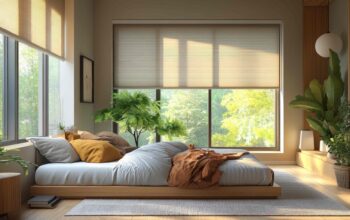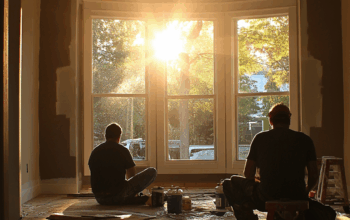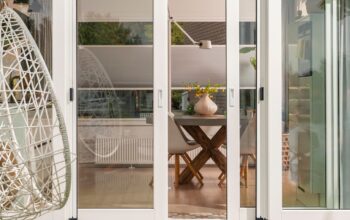When you’re shopping for new windows, you’re not just picking something to fill a hole in the wall. You’re choosing a piece of your home’s personality – one that affects how it looks, feels, and even how much you pay for heating and cooling. In fact, according to ENERGY STAR®, replacing old windows with energy-efficient models can cut household energy bills by up to 15%, and casement windows are among the most airtight operable designs available. Among all the options, the casement window stands out as a style that blends beauty, comfort, and performance in one elegant frame.
Instead of sliding up or sideways, a casement window swings outward on side hinges – like a door for fresh air. And when you close it, the sash presses tight against the frame, sealing out drafts and helping keep your home comfortable year-round. Whether you’re replacing old, leaky windows or building from scratch, a casement design can be a smart upgrade.
What Makes a Casement Window Special?
Casement windows are hinged on the left or right side and open with a simple hand crank. This design brings two big advantages:
- Wide-open airflow: With no central bar in the way, the entire opening catches breezes and funnels them inside.
- Crystal-clear view: A single pane of glass means nothing interrupts your view of the backyard, garden, or skyline. Сasement windows not only maximize airflow and preserve views, but also provide excellent energy efficiency and enhanced security thanks to their tight compression seals and multi-point locks.
Why Homeowners Love Casement Windows
1. Fantastic ventilation
When fully open, a casement window acts like a scoop, drawing fresh air deep into the room. Perfect for cross-breezes on warm days.
2. Energy efficiency
That compression seal – tight on all four sides – makes it one of the most airtight operable windows available. Less air leakage means lower energy bills and a cozier home in winter and summer alike.
3. Security you can trust
Multi-point locks secure the sash to the frame at several points, making it extremely hard to pry open from outside.
Casement vs. Other Window Styles
| Feature | Casement | Double-Hung | Sliding |
| Ventilation | Excellent – full opening | Good – half opening | Fair – half opening |
| Energy Efficiency | Excellent – airtight seal | Good to very good | Good |
| View | Unobstructed | Obstructed by horizontal bar | Obstructed by vertical bar |
| Maintenance | Easy inside; outside trickier without special hinges | Tilt-in sashes for easy cleaning | Moderate – outside fixed pane can be awkward |
Choosing the Right Casement Window
- Frame materials:
- Vinyl: Affordable, low-maintenance, and efficient.
- Fiberglass: Strong, paintable, and stable in any weather.
- Wood: Warm, timeless look but needs upkeep to stay protected.
- Hardware matters:
A sturdy crank and corrosion-resistant hinges will last longer and operate smoothly. - Check performance ratings:
Look for the ENERGY STAR® label and a low U-factor for the best insulation in your climate.
Mistakes to Avoid
- Ignoring clearance: Casements swing out – make sure they won’t hit a walkway, deck rail, or patio furniture.
- Overlooking the screen position: Screens sit inside, which can affect blinds or shutters.
- Buying cheap hardware: Weak cranks and hinges can wear out quickly.
- Not thinking about cleaning: Upper-floor casements need special washing hinges to clean the outside safely.
Casement Windows for Every Style
Don’t think these windows are only for sleek, modern homes. With the right grille pattern or wood-look frame, they fit beautifully into traditional and historic designs too. Their clean lines also make them perfect for contemporary spaces, especially where you want large glass areas without visual interruptions.
FAQ – Casement Window Basics
1. How do I know if casement windows are the right fit for my home?
Think about how you use your space. Do you love throwing open windows on breezy days? Casements are unbeatable for airflow since the whole sash swings open like a door. They’re also great if you want wide, clear views without bars cutting through the glass. On the flip side, if your windows open onto a patio or walkway, the outward swing might not be as practical.
2. Are casement windows really more energy efficient, or is that just marketing?
It’s not just hype. Casement windows press tightly against their frames when closed, creating one of the most airtight seals you can get. That means fewer drafts in winter, cooler rooms in summer, and lower energy bills all year round. If you’ve ever felt cold air sneaking in around an older double-hung, you’ll notice the difference right away with casements.
3. What should I look out for before installing casement windows?
A few things can save you future headaches. Make sure there’s clearance outside so the sash doesn’t bump into furniture or a railing. Double-check the hardware – a strong crank and durable hinges mean smoother use and fewer repairs. And if your window’s on an upper floor, consider models with special hinges that make outside cleaning safer and easier.
4. Do casement windows only work in modern homes?
Not at all. Their clean lines look fantastic in contemporary spaces, but with the right grille pattern or wood finish, they blend seamlessly into traditional or even historic homes. Think of them as chameleons – practical, stylish, and adaptable to almost any design.
Final Thought
Casement windows give you the best of both worlds – the beauty of a wide, uninterrupted view and the comfort of an airtight seal. They’re practical, secure, and stylish, making them a favorite for homeowners who value both form and function. Choose a well-built model, and you’ll enjoy fresh air, lower bills, and a brighter home for years to come.




